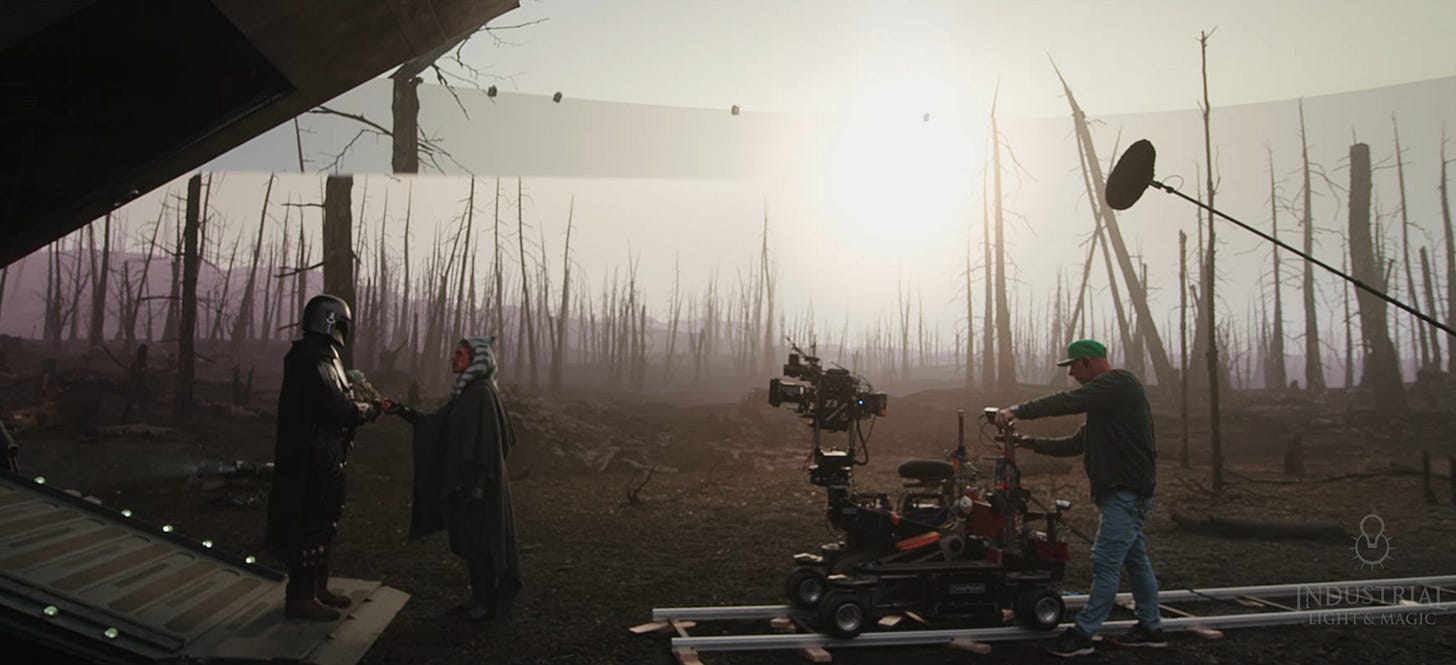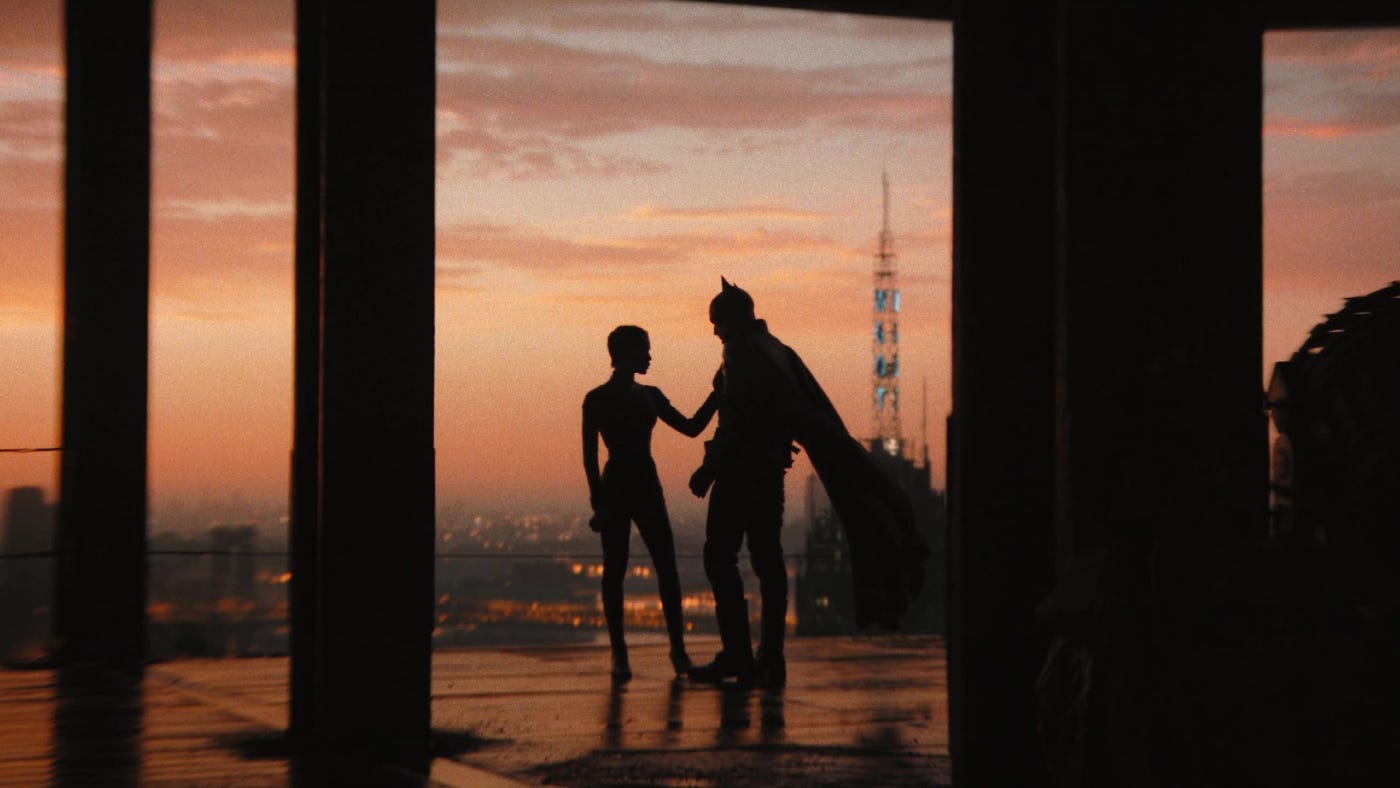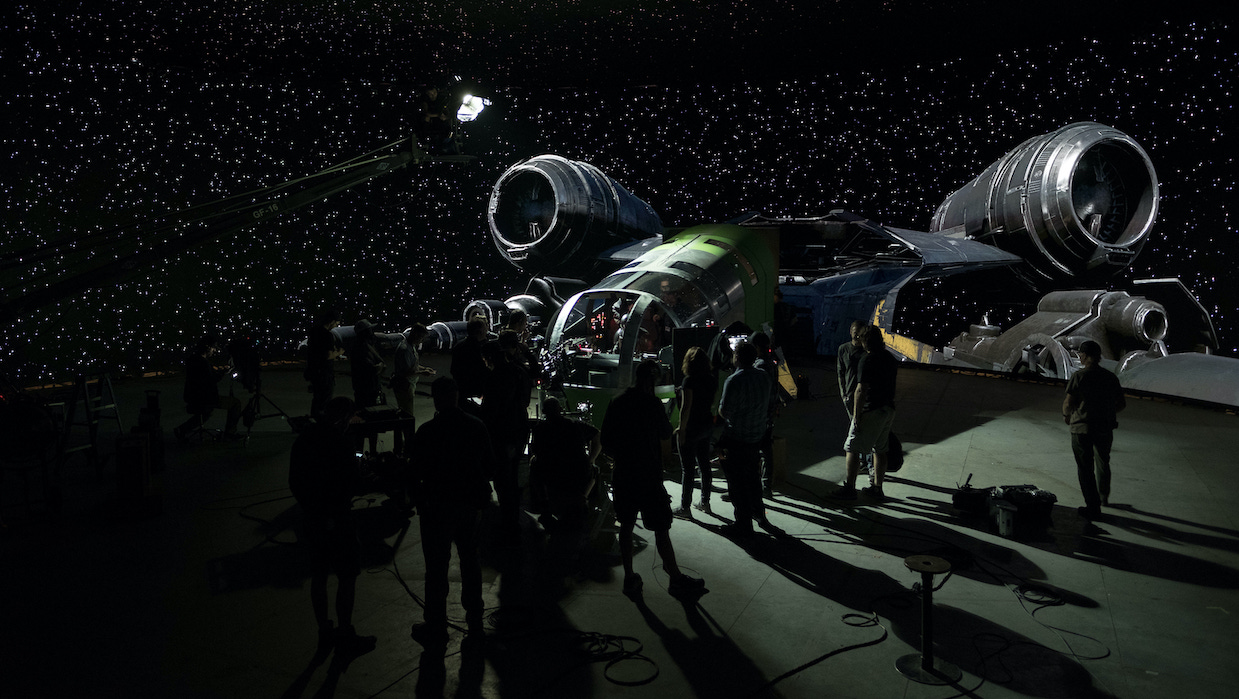Human Lens #29: The Technology Changing the Future of Hollywood
The John Favreau and ILM brainchild that will change the post-pandemic industry
In November 2019, Star Wars’ first live action television series, The Mandalorian, premiered to the world, completely changing the potential of the franchise’s future. While on the outside the show looked like a usual Star Wars production, a wonderful mix of practical and computer generated effects and environments, we would come to discover that what was going on behind the scenes would totally change filmmaking practices for years to come.
The volume, or StageCraft according to Industrial Light and Magic (ILM), is a fully immersive floor and ceiling LED screen marvel that loads in real time. This provides the actors and filmmakers the feel of being on location in any place in the world, while also having total control over the environment such as time of day, lighting, and even the size and location of naturally immoveable objects.

Until recently, Lucasfilm productions, as well as future Marvel Studios productions (Thor: Love and Thunder and Ant-Man and the Wasp: Quantumania), all under the Walt Disney banner, have been exclusive to this technology. Season 1 of the Mandalorian cinematographer Greig Fraser’s most recent project, Warner Bros. The Batman, brought his knowledge of the new LED possibilities to the pandemic altered production of the film. As the success of this technology spreads across the industry, it’s only a matter of time before it’s a mainstay.
The typical budget for a modern age blockbuster tends to be around the $200 million mark. This is the number that Netflix has been throwing at their big budget action movies (Red Notice, The Gray Man) and sometimes the mark goes even higher, like Marvel Studios’ Avengers: Endgame, which was estimated to be over $300 million.
I mention all of these numbers because The Batman had a budget of $100 million dollars while The Mandalorian peaked at around $15 million dollars per episode. This puts it at a total budget around $120 million for an 8 hour project, while still looking like it is movie quality compared to other television shows.
For most of the decade before the Covid-19 pandemic, a strange standard that general audiences implemented on movies was that the higher the budget, the higher the quality. If a studio was throwing a lot of money at something it had to be good, right? Obviously this isn't the case, for high budget movies still get their fair share of differing opinions, especially when it comes to green screen technology and the modern complaint of the lack of color creativity that’s captured in camera.
What StageCraft has been able to provide to filmmakers is more time. You can shoot a sunset scene over a 12 hour shoot day, for example, when in the field you would only have a 30 minute window (which is generous) to shoot with the natural lighting that you want. When a team of filmmakers doesn’t have to stress over scheduling, they can focus on story, character, and the look of a scene with more detail and less headache. The creative process can flow in many different ways instead of being handcuffed to off the cuff reactions and decisions.
It also saves money on travel. There is a beauty to real-life locations being shot on film and brought to the big screen, but there are times when going where you want to go just isn’t possible based off of scheduling, permissions, or, in recent events, the pandemic. In the world of streaming, the impact of saving time while making a production look high quality is in insanely high demand.
In the next decade, we will start seeing the gradual rise of LED technologies being used by all film companies. As Hollywood still attempts to rebound from the losses during the Covid-19 pandemic, this new innovation will be a great, reusable, investment for anyone and everyone.
What I find fascinating about it is that in a way, it’s a return to classic Hollywood, where unreachable places and unbelievable stories were all created in a studio backlot with the audience being none the wiser. The well known phrase “history repeats itself” is certainly relevant here.






